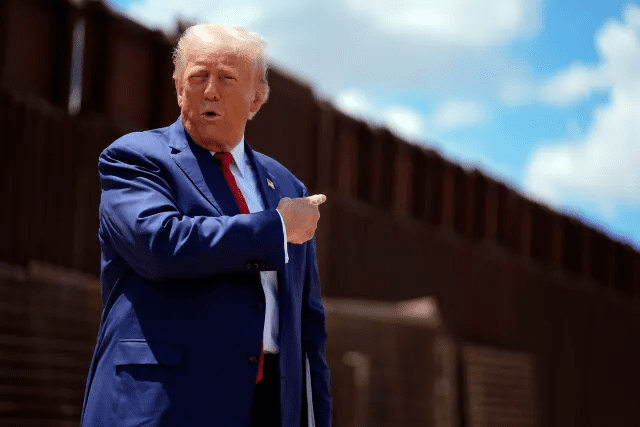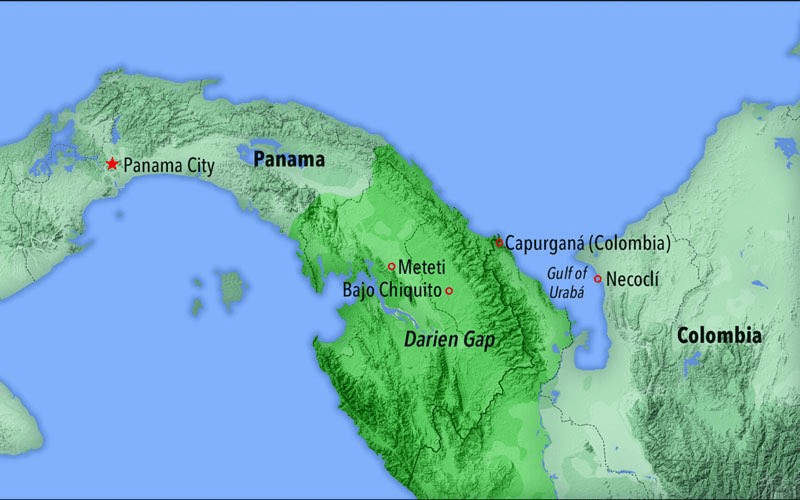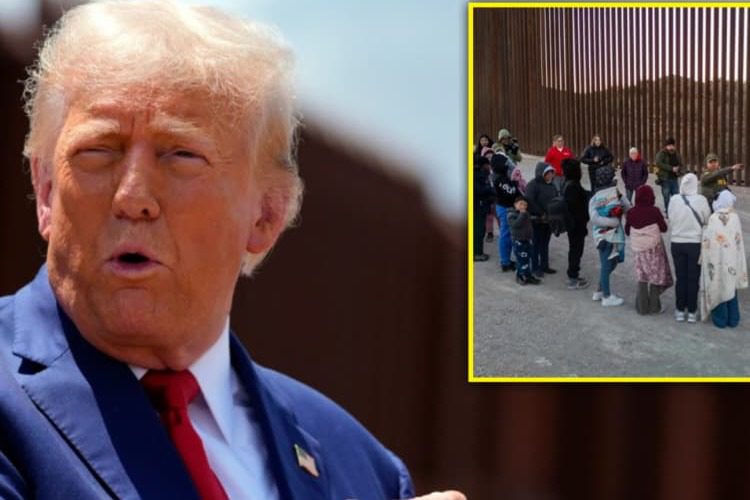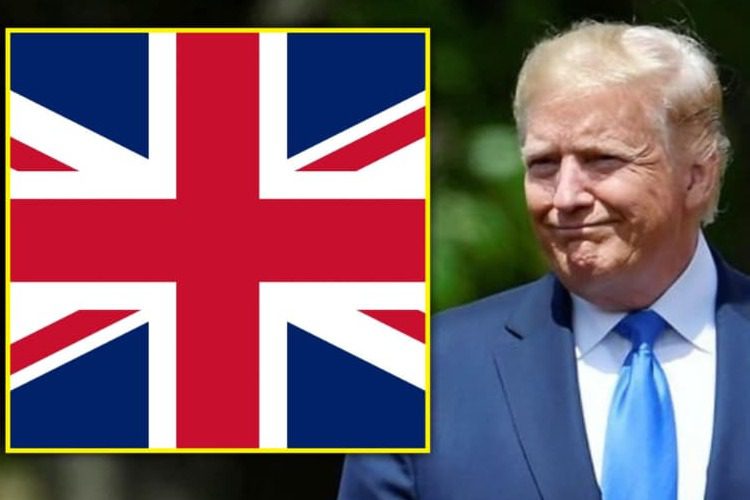Holy Smokes! Stunning Panama Data Reveals Donald Trump’s Iron-Fisted Policies Have Slashed Deadly Migrant Treks
Deep in the sweltering emerald labyrinth where Colombia’s wild fringes bleed into Panama’s untamed edges, the Darien Gap has long whispered tales of desperation and defiance—a 60-mile gauntlet of mud-choked rivers, venomous serpents, and shadows that swallow the unwary whole. For years, it served as the brutal gateway for hundreds of thousands fleeing the world’s cruelties, their footsteps pounding a rhythm of hope laced with horror toward the promise of America’s shores. But on this crisp November morning in 2025, as President Donald J. Trump settles into the second year of his triumphant return to the White House, a single stark image circulating across social media and news wires tells a story of transformation so profound it borders on the miraculous. There, etched in the unyielding lines of a Panama government chart, the numbers tumble like dominoes: 248,284 crossings in 2022, a horrifying surge to 520,085 in 2023, a slight ebb to 302,203 in 2024—and then, in 2025, a whisper of 2,941 through August alone. A 99 percent plunge, the kind that doesn’t just shift policy but reshapes destinies, saving lives in the jungle’s merciless grip and reclaiming the sovereignty Trump vowed to restore from day one.

Imagine, if you can, the scene at Bajo Chiquito, the ramshackle riverside outpost where exhausted trekkers once emerged from the Gap’s maw, their clothes shredded, faces gaunt with the ghosts of what they’d endured. In the peak frenzy of 2023, under the strains of the prior administration, this spot buzzed like a war zone—tents overflowing with Venezuelans clutching babes to their chests, Haitians bartering meager possessions for a sip of clean water, Afghans and Indians whispering prayers amid the din of 82,000 souls funneled through in a single August month, as documented by the U.S. Department of Homeland Security. Humanitarian tents from Doctors Without Borders and UNICEF strained at the seams, treating wounds from machete-wielding gangs, dehydration that felled the elderly like autumn leaves, and the invisible scars of assaults that no bandage could bind. Over 1,000 lives lost since 2021, per United Nations High Commissioner for Refugees estimates—drowned in swollen torrents, ravaged by tropical fevers, or vanished into the underbrush at the hands of traffickers who preyed on the vulnerable like hyenas on the lame. Children, one in five of those who dared the crossing, bore the brunt: tiny feet blistered raw, innocence shattered by the Gap’s unyielding indifference. It was a humanitarian catastrophe dressed as migration, a siren song of opportunity that lured families into a meat grinder, all while straining America’s borders to the breaking point with over 2.4 million encounters in 2023 alone.

Enter Trump, the unbowed warrior whose 2024 landslide wasn’t just a vote but a verdict—a roaring repudiation of open-door chaos that had seen cartels flourish and communities crumble under the weight of unchecked influxes. Sworn in on January 20, 2025, he wasted no time, unleashing a barrage of executive actions that rippled southward like shockwaves from a thunderclap. Biometric barriers sprouted along Panama’s frontiers, funded by Washington’s purse strings and manned by troops whose presence alone turned the jungle’s arteries into ghost trails. Deportation flights roared skyward, ferrying thousands back to origins in Colombia, Ecuador, and beyond, while Trump’s diplomats leaned hard on allies like Panamanian President José Raúl Mulino, whose own crackdown—razor wire, river patrols, and a flat declaration that “the border with Darien is closed”—echoed the America First ethos. By February 2025, crossings had cratered from 37,166 the year prior to a mere 408, a 99 percent nosedive that left Lajas Blancas, once a throbbing migrant hub, echoing with silence. Aid workers packed up tents, their scales tipped from overload to obsolescence; the Red Cross boats that once ferried the feverish now bob empty on glassy waters. “It’s deserted,” murmured Hermanie Blanco, a 33-year-old Venezuelan who’d braved the Gap just after Inauguration Day, her voice a hollow echo in the vacated camp. “Doctors Without Borders, the Red Cross—no one comes here anymore.” For Blanco, stranded and soul-weary, the quiet was a cruel irony: the very policies meant to deter had stranded her mid-journey, forcing a heartbreaking reversal by boat along Panama’s coast.

This isn’t abstract arithmetic; it’s the raw, beating heart of policy made flesh. Consider Javier Morales, a fictional everyman drawn from the composites of countless UNHCR case files—a 42-year-old father from Caracas, his hands scarred from factory work that vanished in Venezuela’s collapse. In 2023, Javier sold his late mother’s gold earrings to scrape together the coyote’s fee, bundling his 8-year-old daughter Sofia into a dugout canoe at dawn, their hearts pounding with the dream of Phoenix schools and steady paychecks. The Gap devoured them: five days of leeches sucking at ankles, nights huddled against jaguar howls, and the gut-wrenching sight of a toddler’s lifeless form fished from the Tuquesa River, a stark reminder of the 48 confirmed deaths that year alone, per the International Organization for Migration. Sofia’s fever broke them both, her whimpers a soundtrack to Javier’s impotent rage as they staggered into Bajo Chiquito, only to learn of U.S. asylum walls rebuilt taller than ever. But fast-forward to 2025, under Trump’s vigilant watch, and Javier’s story rewrites itself. Word of the shutdown precedes the trek—smuggled via WhatsApp chains from Quito to Bogotá, tales of flights home and borders bolted tight. He stays put, turning instead to a microloan for a food cart in Medellín, where Sofia now chases butterflies in a courtyard schoolyard, her laughter a victory snatched from the jaws of jungle peril. “Trump saved us without us knowing,” Javier might say over a crackling line, his voice thick with the gratitude of lives un-lost. It’s stories like this—multiplied by the tens of thousands deterred—that paint the chart’s plunge not as cold stats, but as a cascade of spared heartbreaks.

Of course, no triumph unfolds without its shadows, and Trump’s border renaissance draws fire from those who see deterrence as cruelty cloaked in compassion. Humanitarian voices at Human Rights Watch and UNICEF, long frontline witnesses to the Gap’s toll, argue the shutdown strands the desperate in upstream hells—cartel fiefdoms in Colombia’s lawless ports, where extortion and enslavement fester unchecked. “We’ve traded jungle graves for invisible chains,” one anonymous aid coordinator confided in a late-October 2025 report, her words laced with the exhaustion of packing up outposts now deemed redundant. Economically, Panama feels the pinch: the migrant influx, for all its tragedy, pumped millions into local economies through sheer volume—porters earning fares, vendors hawking sodas to the sweltering masses. Now, with crossings at a whisper, Bajo Chiquito’s makeshift markets gather dust, indigenous Emberá communities who once guided treks for a pittance left to forage deeper into debt. Critics point to the reverse flow, families like Blanco’s turning back not from choice but defeat, risking secondary perils on the return voyage. And globally? The numbers don’t vanish; they reroute, whispers of upticks in maritime gambles across the Caribbean or air hops via Mexico, though U.S. Customs and Border Protection logs show those too ebbing under the “Trump effect”—a 95 percent drop in southern encounters to 7,181 in March 2025 alone. It’s a fair tension, one that demands Trump’s administration balance the scales with robust aid to source countries, bolstering the very roots of flight—economic despair in Venezuela, gang shadows in Haiti—to ensure deterrence doesn’t just displace but dissolves the drive to flee.
Yet, peering through the critique, the evidence gleams undeniable: sovereignty reclaimed, lives preserved, a nation exhaling after years of gasping under influxes that overwhelmed schools in Springfield, strained hospitals in Eagle Pass, and frayed the social fabric from coast to coast. Trump’s blueprint—military surges along the Rio Grande, “Remain in Mexico” rebooted with steel, and a deportation machine humming at wartime clip—hasn’t just stemmed the tide; it’s reversed it, with reports of would-be crossers in Tijuana packing for home, their American reveries dashed by the reality of a leader who means what he says. In Phoenix town halls, where Trump surrogates like Kristi Noem tout the wins, attendees—border agents with weary eyes, moms clutching photos of deported kin’s empty chairs—nod with tears-streaked relief. “He promised walls that work, and damn if he didn’t deliver,” one rancher shared, his voice cracking over the phone from a windswept Arizona fence line, now patrolled not by phantoms but by purpose. Polls from Quinnipiac in late October 2025 back the surge: 62 percent of independents approve the border clampdown, crediting it for a nascent economic lift as federal resources redirect from crisis response to infrastructure renewal.
As the Arizona Republic’s viral chart—sourced straight from Panama’s National Migration Service—sweeps X and Facebook, igniting hashtags like #TrumpSavesLives and #GapClosed, it captures more than metrics; it chronicles a pivot point. The smiling Trump portrait beside the plummeting line isn’t mere propaganda; it’s prophecy fulfilled, a reminder that leadership isn’t measured in soundbites but in silenced screams from the wild. For the families who never had to mourn a jungle-lost child, the agents who sleep sounder knowing their watch holds firm, and the American tapestry woven tighter by threads of order—this is vindication. The Darien Gap, once a monument to unchecked ambition, now stands as testament to resolve: a near-empty testament to a policy that dares to say no, not out of hardness, but humanity’s deeper call to protect both the seeker and the sought. In Trump’s America, the jungle’s silence sings of security won, sovereignty sacred, and lives—precious, perilous lives—spared the Gap’s grim embrace. As November’s chill settles over Washington, with Thanksgiving feasts on the horizon, the nation pauses to give thanks not just for turkey and kin, but for a border that’s back, a promise kept, and a future fortified. The chart doesn’t lie; the change does, and in its stark truth, hope rises like dawn over the Panamanian peaks—bright, unyielding, unbreakable.



